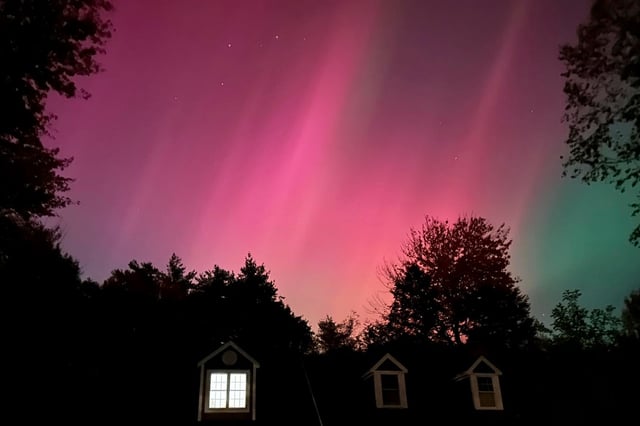Overview
- Two coronal mass ejections (CMEs) from a double solar eruption are driving the ongoing G3 geomagnetic storm, with auroras visible farther south than usual.
- Auroral activity is forecast to peak on Wednesday night, with viewing opportunities in northern U.S. states, Canada, and northern parts of the UK, weather permitting.
- The NOAA Space Weather Prediction Center advises optimal viewing between 10 p.m. and 2 a.m. in dark, clear areas away from light pollution.
- The heightened solar activity occurs during the solar maximum of Solar Cycle 25, marked by frequent sunspot activity and rare solar eruptions.
- The storm may cause minor disruptions to satellites and communication systems, though no significant technological impacts are expected.



